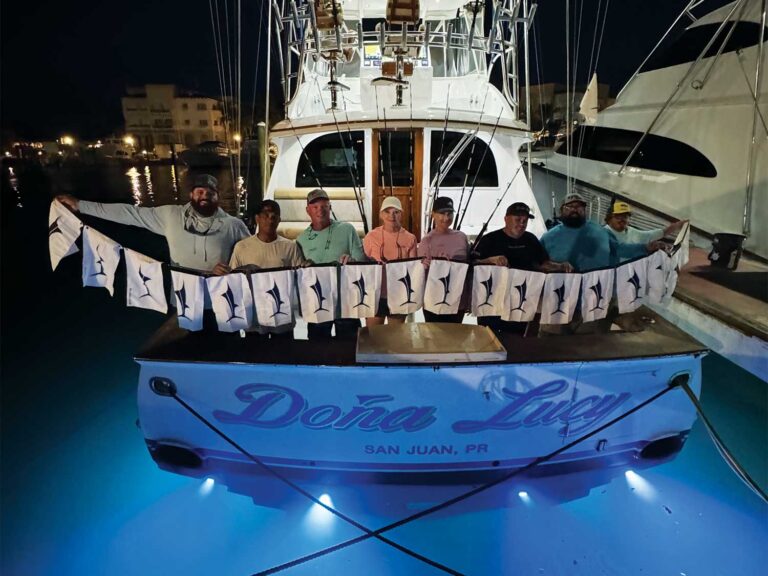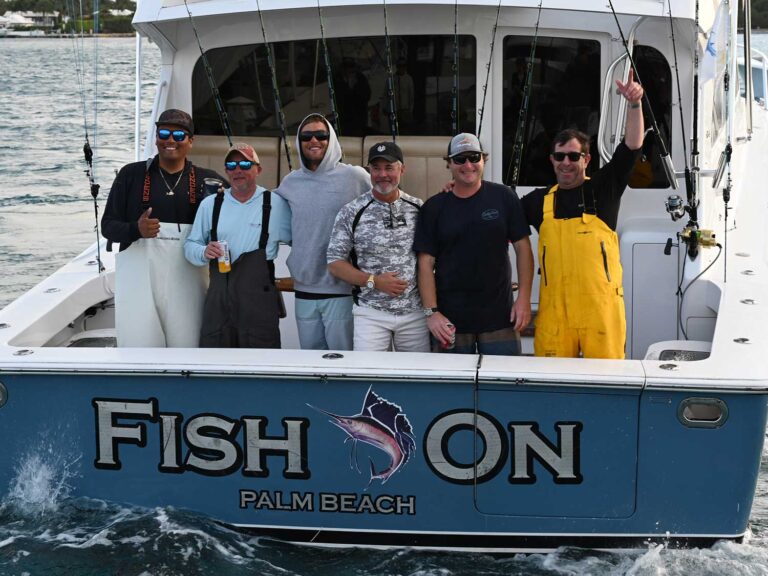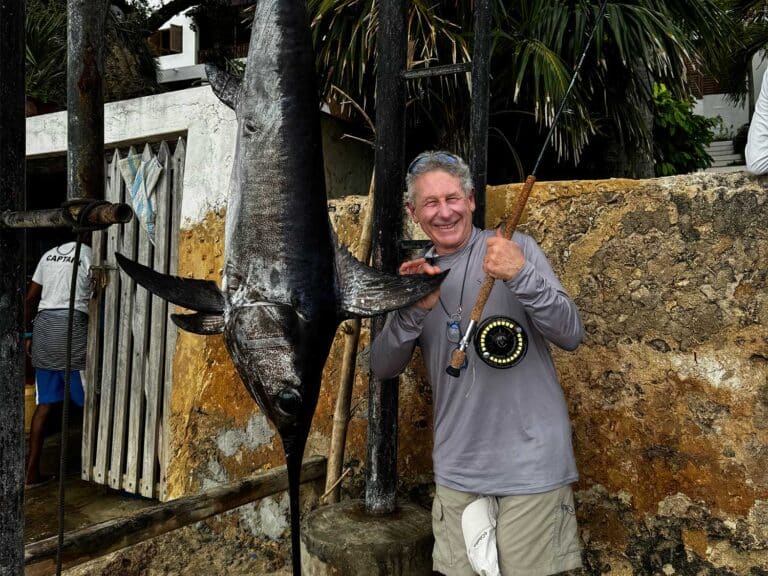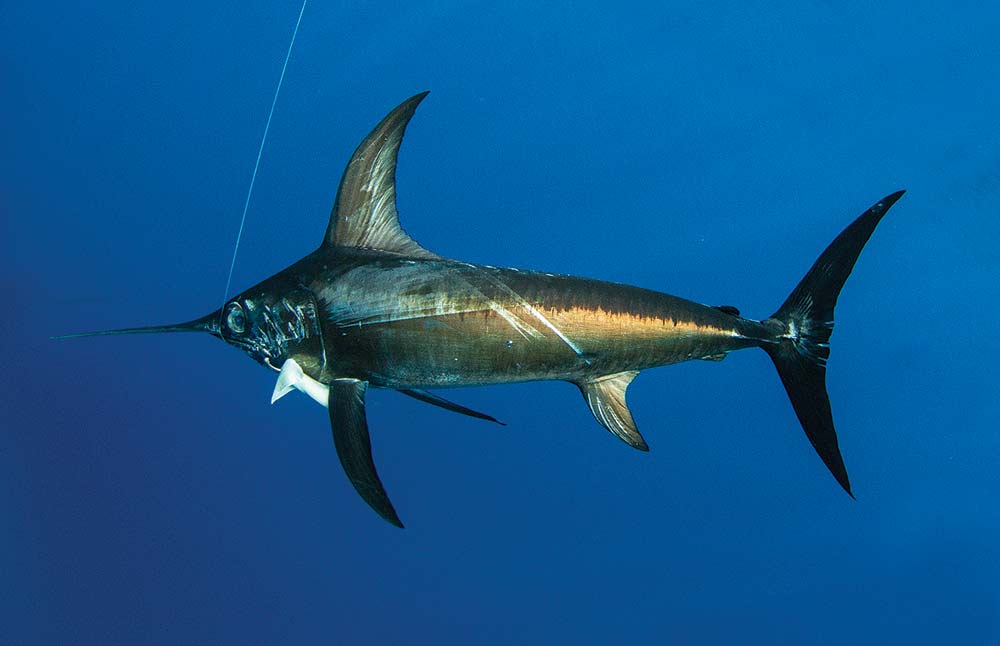
The Stanczyk name has been a mainstay in the Florida Keys fishing community since 1978, when the family purchased Bud ’n Mary’s Marina in Islamorada. Many of Capt. Nick Stanczyk’s swordfish techniques have come by way of his father, Richard, who pioneered daytime swordfishing there. If a fisherman’s achievements are measured by another’s success with the same recipe, then Nick is the icing on the Stanczyk family cake.
The Bait
There are three preferred baits Nick Stanczyk uses aboard his charter boat Broad Minded: the tried-and-true bonito and mahi bellies and the more unique bonito taco. The mahi and bonito skin is tough enough to withstand the beating it takes before a swordfish eats it, and the bonito taco has plenty of swordfish-attracting scent and flutter while also being stitched for extreme durability.
Carefully rig each bait and always pull it in the clean water of the boat’s wake to ensure it swims properly before sending it into the depths. A spinning bait does the same thing on the bottom as it does on the surface, just on a much grander scale.
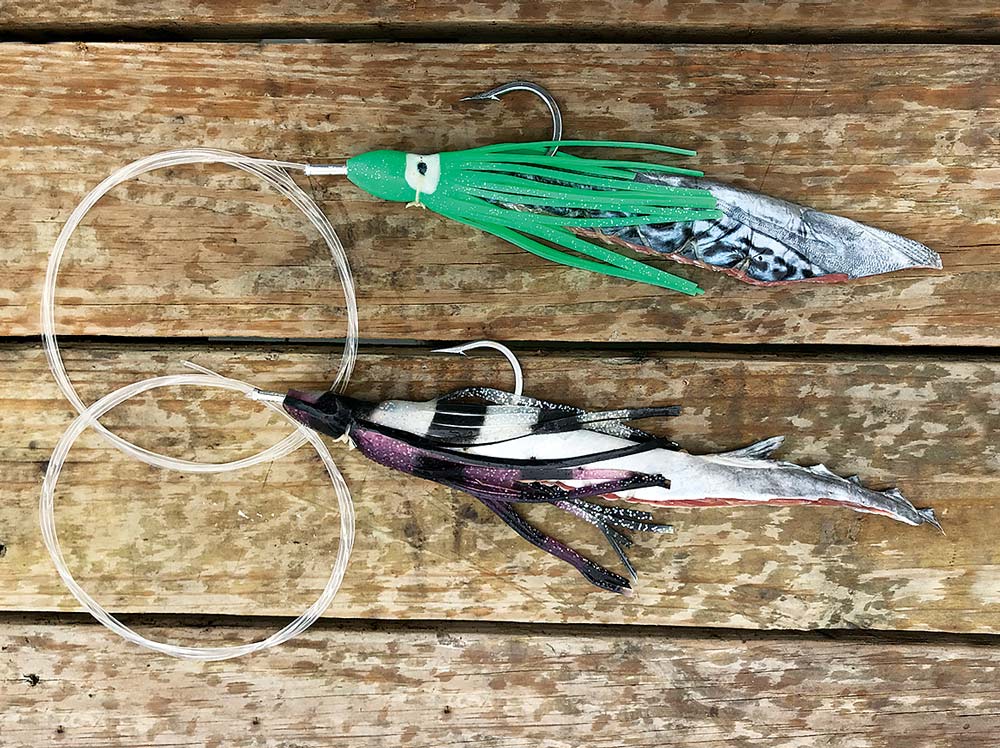
Squid is another popular swordfish bait. Here’s how to rig one
The Setup
Stanczyk employs two setups for swordfishing during the day: a manual 50-pound-class reel loaded with 65-pound-test braid and a 150-foot 130-pound-test wind-on leader on a 5-foot-9-inch custom rod, or an electric 80-pound-class reel loaded with 80-pound-test braid and a 150-foot 200-pound-test wind-on leader on a 7-foot custom rod. With either setup, two Duralite Diamond LED deep-drop lights are placed at 20- and 40-foot intervals from the bait.
When hand-cranking, he uses a breakaway weight system when the current is moving swiftly. In a light current, he fishes these outfits with a 4- to 6-pound weight on it throughout the fight in order to keep tight to the fish. The amount of weight used in either method will depend on the strength of the current; rebar or concrete are common breakaway weights.
The breakaway method uses a short piece of 15- to 20-pound-test monofilament tied between two waxed loops on the wind-on leader. By attaching the two loops together with the light mono, a U-shaped bend is created in the wind-on. This allows the weight to pop off once a significant amount of pressure has been put on the fish by the angler, who can now continue the fight unhindered.
When starting a drift, Stanczyk deploys two baits by driving with the current. Once he has out enough line to be close to his fishing depth, he will circle back 180 degrees and fish the baits into the surface current. The two rods are fished at staggered depths: one close to or within 50 feet of the bottom, and the other from 50 to 500 feet off the bottom. By bumping the boat in and out of gear to stay on course and into the current, Stanczyk aims to keep his speed-over-ground at a modest 1 to 2 knots.
Whether fishing a single piece of bottom or drifting an entire area, it is important to check the depth every 10 minutes on the deeper rod by free-spooling the rig until it hits bottom and the line is slack. Once you’re on the bottom, reel the rig up again to the desired depth. Stanczyk will adjust to stay close to the bottom and then set the shallower rod accordingly until the entire drift has been completed.
The Bite
“If you aren’t watching the rod tips when swordfishing, then you’re not swordfishing,” says Stanczyk.
The sword bite is most always a very subtle tap-tap or single solid thump. Training your eye to recognize the bite — over the methodical tip movement caused by the rocking boat — and then reacting to it is key, says Stanczyk. Hooking techniques can vary depending on the class of fish in the area and what mood they are in. Some fish are aggressive, while others are lazy, so the same hooking technique will not always work on every fish.
“I will try to stay on top of the line by keeping it vertical during the hookup process,” he says. “If we start coming tight, and the rod loads up, I will bump the boat in reverse to help drive the hook.” Adding some drag on the hookup will also help. “I’ll go up to 20 or 25 pounds of heat to set the hook, then back it off to around 16 pounds after we come tight,” he says. “You want to be sure the fish is hooked well right from the start. If it’s not hooked well, then it’s not hooked.”
The Fight
Once the angler is set up in a harness or fighting chair, you will need to continually bump the boat into the current as you gain line. With a fight somewhere between a tuna and a marlin, Stanczyk says some of his biggest fish have swum right to the boat to give him an early gaff shot. Make the decision whether your fish is going in the box or being released before the leader suddenly appears. Having everything ready before you lock eyes with a big swordfish will cut down on the mayhem, because once the fish swims into that warm 300-foot depth range, its perceived docility will dramatically change.
“Swordfish fight like no other fish,” Stanczyk says. “And they will try to get under the boat when they are on the leader. Don’t be afraid to get aggressive on the throttles.” Once the fish is boatside, circle it to keep the fish at a safe distance while you manipulate it into range for a gaff shot. Otherwise, simply cut the leader and celebrate the release. Either way, it’s game over.
Bonito Taco
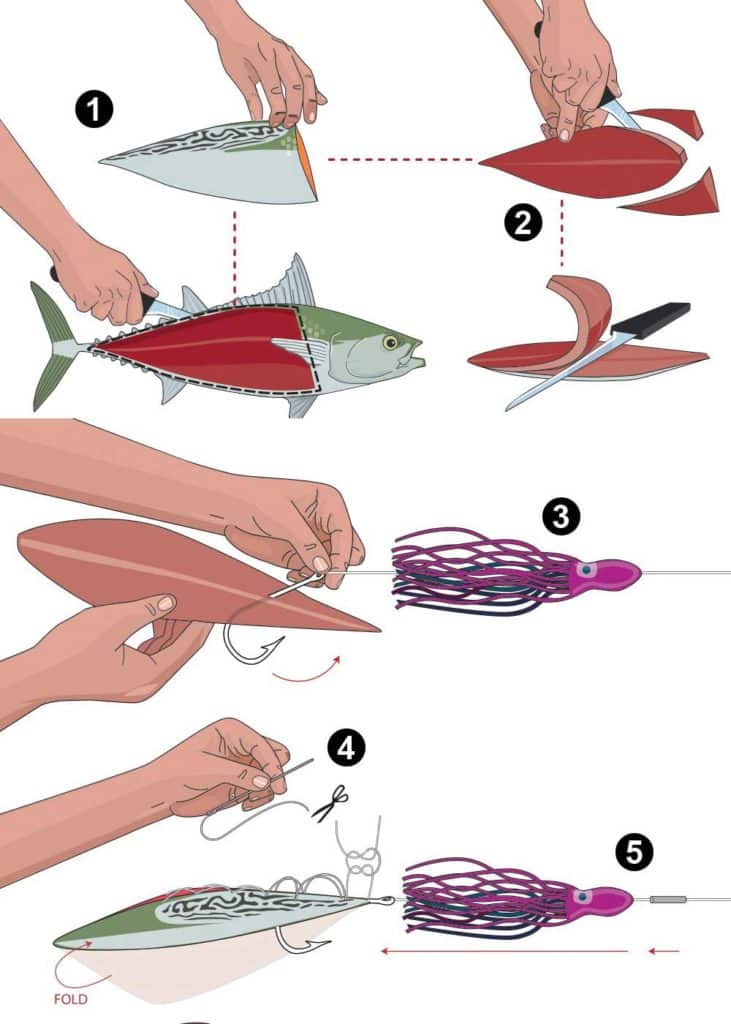
- Remove the bonito fillet and trim to a teardrop shape.
- Evenly shave off most of the flesh, leaving the skin intact, and then cut a quarter-inch channel down the long center of the fillet, carefully removing most of the meat without puncturing the skin.
- Fit a 10/0 (or 9/0 for smaller baits) Mustad 7691 hook in the desired position on the longer end of the teardrop, and make a small incision for the barb to pass through on the centerline of the belly. The hook eye will not be inside the bait but sitting right on the top edge when folded over. Stitch the hook in place.
- Starting at the head, fold the bait in half, and begin a series of cross-stitches along the back of the bait, leaving the tail section unstitched.
- Crimp a 6-foot 300-pound-test monofilament leader to the hook, then slide on an octopus skirt to snugly cover the head of the bait.




